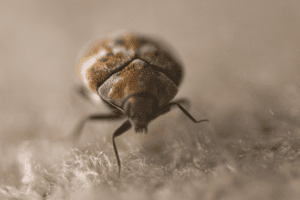A Kent Expert’s Guide to Removal, Prevention & Long-Term Solutions
You’re enjoying a warm summer evening in your garden when a sudden swarm of winged ants appears from the patio. Within minutes, they’re crawling up walls, buzzing near your lights, and some have found their way inside. So — what now?
If you live in Kent — from Ashford to Canterbury, Maidstone to Folkestone — flying ants are a seasonal challenge. But the good news is: you can stop them. This guide breaks down exactly how to get rid of flying ants safely and effectively.
What Causes Flying Ants to Appear?
Flying ants emerge during their nuptial flight — a coordinated event triggered by:
- Rising temperature (typically 20°C+)
- High humidity after a period of rain
- Still wind speeds and warm, calm evenings
They’re not a different species. They’re the reproductive ants — queens and males — from common UK colonies like the black garden ant (Lasius niger), pharaoh ants, or carpenter ants.
When these conditions align, ant colonies across Kent release their winged ants into the air in a synchronised mating event.
Are Flying Ants Always a Problem?
Not always. A single garden swarm might be nothing to worry about. But flying ants become a pest control issue when:
- They appear inside your property
- You see them every year in the same place
- You spot ants emerging from walls, vents, or floorboards
If any of the above apply, you’re not just dealing with a one-off swarm — you’re dealing with an active ant colony, possibly inside your home.
They can also attract other pests like spiders, silverfish, beetles, and even scavengers such as cockroaches or rodents, which take advantage of ant trails and food residue.
Step-by-Step: How to Get Rid of Flying Ants
1. Quick Action: Remove the Immediate Swarm
If you’ve suddenly got flying ants inside:
- Use a handheld vacuum cleaner to quickly remove them (dispose of the bag outside)
- Spray with a natural insect repellent — we recommend peppermint or tea tree essential oil diluted in water and dispensed via a spray bottle
- Wipe affected surfaces with soap, vinegar, and water to eliminate pheromone trails
Avoid using harsh pesticides indoors unless absolutely necessary.
2. Identify the Source
Check common entry points:
- Skirting boards
- Air vents
- Wall sockets
- Roof voids or loft insulation
- Gaps around pipework or bathroom fittings
Flying ants coming from a specific location — like between floorboards or a wall — may indicate a nest. This is when it shifts from nuisance to infestation.
3. Target the Nest
Eliminating the visible ants isn’t enough. You need to reach the queen ant and the ant colony.
- Use bait stations or a mixture of boric acid and honey placed strategically near trails
- Dust gaps with diatomaceous earth, which damages ants’ exoskeletons
- Never seal entry holes with caulk before treating — you risk trapping ants inside walls or redirecting them elsewhere
You can also try borax mixed with sugar or syrup as a DIY bait, but apply with caution if pets or children are nearby.
4. Prevent Future Infestations
Prevention is the long-term fix. Here’s how to secure your home or business:
- Seal cracks in external walls, brickwork, and around doors with weatherproof caulk
- Clear vegetation and plants touching the property
- Keep bins tightly closed and away from walls
- Clean up fruit, crumbs, and sugary spills promptly
- Fix dripping taps, leaks, or water pooling — ants are drawn to liquid sources
- Regularly deep-clean the kitchen, especially beneath carpets, appliances, and around plumbing
Also check garages and bathrooms where humidity can encourage nesting.
Natural Remedies That Work (To a Point)
For early-stage prevention or mild swarms, try:
- A spray bottle filled with peppermint oil, lemon juice, and water as a surface spray
- White vinegar and soap mix to disrupt scent trails
- Sprinkle diatomaceous earth along skirting boards and behind kitchen appliances
- Use essential oils like clove, citrus, and eucalyptus to mask food scents and confuse trails
These are great deterrents but won’t eliminate a mature nest.
When to Call the Professionals
Use DIY If:
- It’s your first swarm
- They’re only outdoors
- You’ve spotted fewer than 50 and no obvious nest
Call Innovation Pest Control If:
- They’ve appeared inside your property
- You’ve had them for multiple years
- You suspect nesting in walls, timber, or near roof voids
- You want to prevent costly damage from carpenter ants, termites, or damp-loving insects like woodworm
We don’t just eliminate the ants — we assess the cause, location, and future risk. And we use precise, safe treatments suitable for homes with pets, children, or sensitive areas.
Why Kent Homes Are Prone to Flying Ant Infestations
Kent’s unique climate and mix of new developments and older homes make it ideal for ant nesting. Areas with poor drainage, damp wood, and lots of paving — common in Ashford, Whitstable, and Medway — create perfect conditions for ants to thrive.
With the urban heat island effect increasing temperatures in towns, and changes in seasonal humidity, flying ant swarms are becoming more frequent and larger in scale — often detected on weather radar.
These conditions also support other summertime pests like mosquitoes, bees, wasps, and moths, meaning proactive prevention is more important than ever.
The Commercial Impact: Businesses Beware
For restaurants, food prep areas, guesthouses, and schools, flying ants can damage your reputation fast.
Our commercial pest control service ensures compliance, cleanliness, and uninterrupted operation — backed by full risk assessments and monitoring reports.
Flying ants can also attract bird activity, which creates secondary risks. We provide integrated solutions including bird control for vulnerable rooftops and loading bays.
What Happens If You Do Nothing?
Flying ants may seem like a one-day problem, but ignoring them can lead to:
- Established colonies in lofts, walls, or insulation
- Recurring infestations every summer
- Damage from burrowing carpenter ants or termites
- Food contamination and increased risks from pests like bed bugs, flea, cockroach, and rodent invaders
Ants don’t go away on their own. Colonies can last up to 10 years, and signs of eggs or constant dust trails mean it’s already well advanced.
Innovation Pest Control: Your Local Flying Ant Experts
Based in Kent, we specialise in discreet, reliable flying ant removal. Whether you’re in a terraced house in Maidstone or managing a holiday rental in Ashford, we tailor our approach to your property.
What you get:
- Same-day or next-day appointments
- Transparent quotes and no hidden costs
- Safe, targeted treatment with follow-up if needed
- Expert advice on prevention and monitoring
📞 Call 07743 958655 📧 Email us now to request a site survey
Final Thoughts: How Do I Get Rid of Flying Ants in the UK?
You get rid of flying ants by doing three things:
- Deal with the swarm immediately
- Eliminate the nest and queen
- Prevent future infestations through proper sealing, cleaning, and strategic deterrents
If you’re in Kent and tired of uninvited summer guests, call Innovation Pest Control — and let’s protect your home before they take root.
📞 Call today on 07743 958655 for flying ant removal in Ashford, Canterbury, Maidstone, and beyond.







